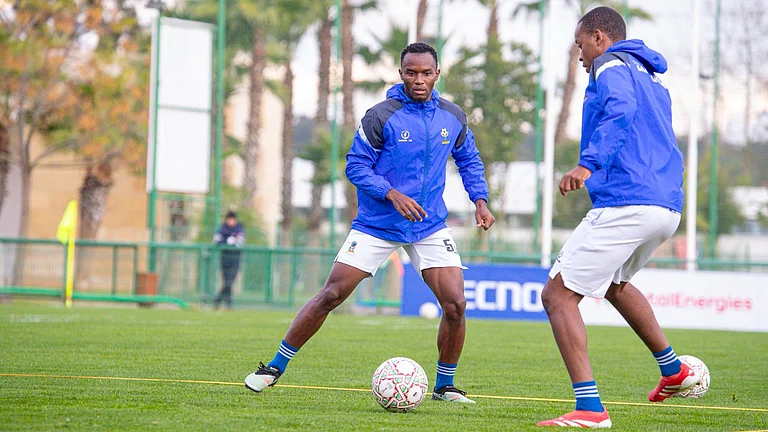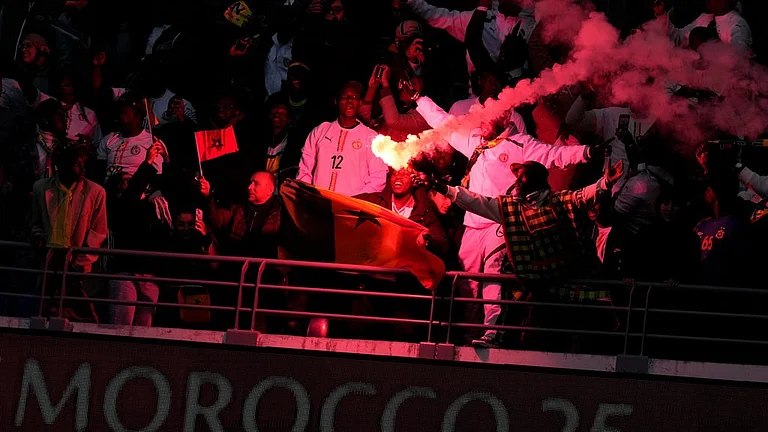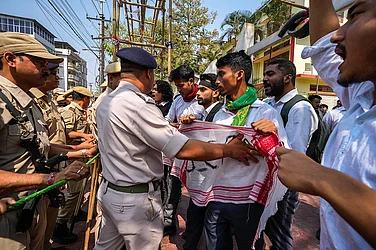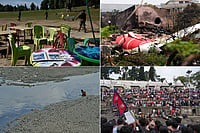Kamach, the last village on the Kishtwar-Anantnag border, lies approximately 150 km south of Srinagar in Chatroo tehsil. Nestled among lush mountains, the village comprises around 35 households.
Its picturesque setting apart, life in Kamach is all about challenges. The villagers lack access to tap water and electricity while relying primarily on solar power. For lighting, they resort to burning wood. Only some of the villagers have solars.
The absence of essentials like electricity has a profound impact on daily life in Kamach. The villagers don’t keep TVs, washing machines or any other electric appliances at home. For children, it is a tough battle. The nearest middle school is located four kilometres away in a neighbouring village, making education a difficult pursuit for the children who mostly come from farming backgrounds.
In some parts of Srinagar city, protests against the installation of smart electricity meters have become a regular feature. Many women from the old city of Srinagar have been taking to the streets in recent weeks, voicing their opposition to the installation of smart power meters.
“I have no one else to earn for my family. I sell vegetables and pay my children's fees. I cannot afford to shell out Rs 2,000 a month for electricity,” says Ziana Begam from the old city.
The protesters fear that once the meters are installed, they will not be able to pay the hefty electricity bills and the power department will cut the power supply.
Across Jammu and Kashmir, tribals are protesting against the Bill brought by the Bharatiya Janata Party-led Union government to grant tribal Scheduled Caste status to the Paharis. The Union government introduced the Constitution (Jammu and Kashmir) Scheduled Tribes Order (Amendment) Bill, 2023 in the Lok Sabha in the current session. According to the Bill, Paharis, a linguistic minority in Jammu and Kashmir, would be notified as a Scheduled Tribe (ST). The Gujjars argue that Paharis are upper castes and if they are granted ST status, the Gujjars, who were granted ST status in the 1990s, will suffer and be pushed into perpetual poverty.
Khurshid Alam, a 30-year-old Gujjar from Shamspora village of Tangdhar, around 150 km north of Srinagar, close to the Line of Control (LOC), says that once Paharis get ST status, it will force Gujjars into permanent penury.
“For the past 30 years, the grant of ST status has helped the Gujjar community to come out of poverty to some extent. But a larger part of the community being uneducated couldn’t avail its benefits, especially in government jobs,” says Alam, who is a middle-school pass.
“My father died and I couldn’t continue my education. Now that our children have started going to schools and colleges and we thought that the ST status would benefit them, the government has started including Paharis in the ST category. We will not be able to compete with the upper castes,” he adds.
While the government says that it is making J&K a zero-poverty region and everyone will have a house by 2024, political parties say that everyday protests in both Kashmir and Jammu regions reflect the actual ground situation rather than the government figures. They say that the fear of being plunged into poverty is widespread even among those who are slightly better off.
In June 2023, Chief Secretary Arun Kumar Mehta declared that J&K will achieve ‘Zero Poverty’ and ‘Housing for All’ by 2024. He says that J&K intends to cover about 1.9 lakh houses under PMAY, and these are enough to satisfy the housing needs of all those who don’t have homes.
According to the latest National Multidimensional Poverty Index (MPI), based on National Family Health Survey (NFHS)-5 (2019-21) and NFHS-4 (2015-16), J&K has witnessed a substantial decline in multidimensional poverty.
The report found that the multidimensional poverty levels in J&K are lower than the national average. The national MPI for 2019-2021 is 14.96 per cent. In J&K, the percentage of the multidimensional poor population has reduced from 12.56 per cent to 4.80 per cent, with over 1 million people emerging from poverty.
The National Multidimensional Poverty Index (MPI) is a tool developed by NITI Aayog to measure multidimensional poverty in India. MPI measures multi-dimensional poverty against 12 parameters. These are as diverse as having a bank account and school attendance. In 2015-16, over 25.88 per cent of the population in J&K faced nutritional deprivation, which was reduced to 15.52 per cent in 2019-21. Child and adolescent mortality rates have also improved, declining from 1.85 per cent to 0.75 per cent during the same period.
However, many economists say the poverty reduction in J&K is far lower than in other states —even BIMARU states which have massive poverty headcounts.
“The performance of J&K on MPI reduction when compared to the states of Bihar and MP, which are much worse than J&K in absolute and relative poverty indices, is less encouraging,” says a former official of the Directorate of Economics and Statistics, J&K government.
In Bihar, the decline is 18 per cent and it’s 16 per cent in MP, but in J&K the decline in MPI on a headcount basis is just 7.7 per cent.
“Indeed, Ladakh and even Daman and Diu have fared better than J&K. This is surprising because J&K has had the lowest poverty ratios in the country for decades since 1970. It has been consistently less than the all-India poverty ratio,” the former official says.
National Conference Provincial President Rattan Lal Gupta is the only one who has been consistently disputing the data released by Niti Aayog, claiming the report misrepresents the current state of affairs in the region.
“You are saying we have pulled 1 million people out of poverty. But what you have done in J&K from 2019 to 2021 that 1 million people have come out of poverty?” Gupta says. “After 2019, no recruitment has taken place. The government issued advertisements for various posts and then cancelled all selection lists after the examination. Not a day passes in Jammu without protests about growing unemployment. The BJP told Parliament after 5 August, 2019 that there will be huge industrial development. Has it happened? No industrial investment has been seen in J&K.”
The National Conference Jammu Region President says that according to the government’s own figures, unemployment in J&K is the highest in the country. The Centre for Monitoring Indian Economy (CMIE), monitoring monthly unemployment in India, has pegged Jammu and Kashmir’s unemployment rate for the age group of 15-29 years as 18.3 per cent. This rate is about 8 per cent in the rest of the country.
“The government’s own figures say that 44 per cent of ST areas have no drinking water facility and yet, they claim they have reduced poverty,” Gupta says. “The unemployment in J&K is highest in the country and you are saying one million are out of poverty. Only among the two could be true."
BJP leader Davinder Singh Rana looks at the issue differently. He says there has been massive expenditure on infrastructure in urban and rural areas, which has led to empowerment and earning. He points out that skilled, unskilled, and small-time entrepreneurs have prospered.
Rana, who himself is an industrialist, says the Ayushman Bharat card that is provided to all residents of J&K, giving access to free medicare up to Rs 5 lakhs, has helped to add to the income of the poor. According to him, the welfare schemes of the government like Ayushman Bharat providing direct benefit to the poorest of the poor have raised the standard of living and increased the income of the people.
“The economy of J&K has seen a many-fold jump and it is reflected in the report,” he adds.


























